A catalpa flower and its thrip
 May 29, 2015 • 7:56 AM UTC
May 29, 2015 • 7:56 AM UTC Unknown Location
Unknown Location 140x Magnification
140x Magnification Microorganisms
Microorganisms
laksiyer
Human observer of life. https://sukshmadarshin.wordpress.com
97posts
1255comments
5locations
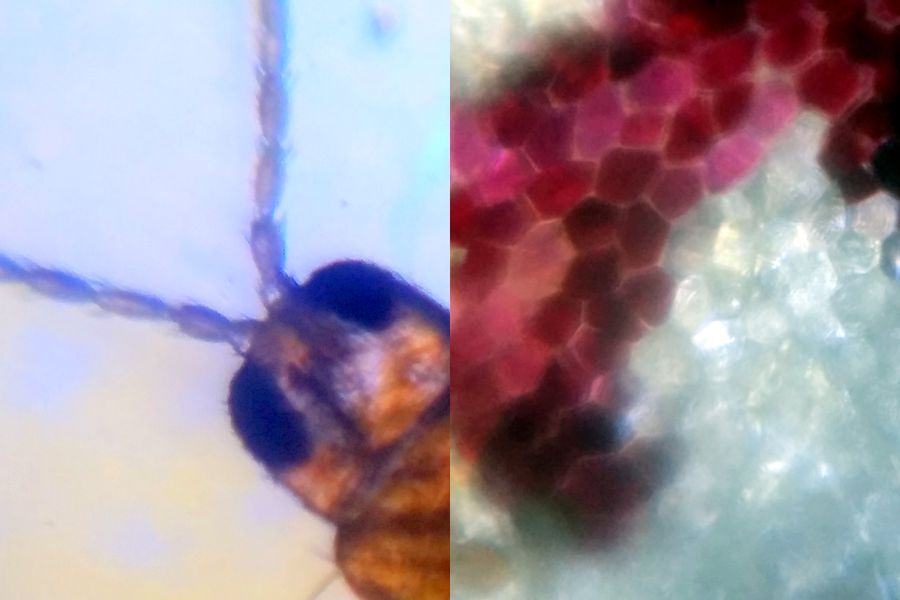
The best thing about hunting for the unknown is seeing the unexpected. I was on a morning walk through the woods in my area scouting for flowers when suddenly I saw over a 100 flowers strewn on the path. The flowers were orchid-like, white with purple streaks with orange/yellow spots, and were really pretty to behold. After some investigation I figured that they originated in the Catalpa tree some 50 feet above my head (Figure 1).

Figure 1 (Click on figure for hi-res image)
A close inspection of the petal revealed that the purple streaks in the flower are distinct from the background white and they looked really great under the foldscope. They almost looked like runway lights for flying insects and are perhaps used to attract them to their pollen; which leaves me wondering if there is someway to read this color code like an insect.
A close inspection of the petal revealed that the purple streaks in the flower are distinct from the background white and they looked really great under the foldscope. They almost looked like runway lights for flying insects and are perhaps used to attract them to their pollen; which leaves me wondering if there is someway to read this color code like an insect.
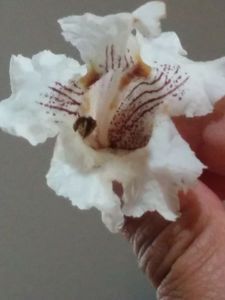
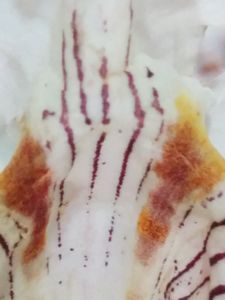
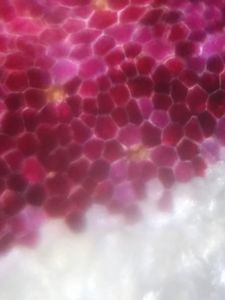
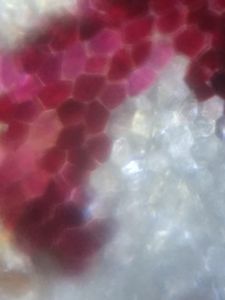

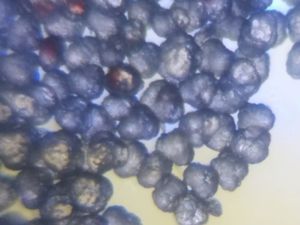
Figure 2 (Click on each pic for hi-res image)
The pollen of these, about 50 microns in size were the first of a kind I have seen and they appear to be in tetrads, like the atoms of carbon (Figure 2, bottom right). Wonder why they have this arrangement, perhaps they are a product of incomplete divisions?
As I was dusting the pollen onto the slide, I noticed a tiny arthropod running on it. There were quite a few actually, and in addition to the Catalpa sphinx moth (that solely uses this tree), these might be other residents of this plant with little publicity, and so I thought I’d foldscope one of them, about 1 mm in size, for identification.
The pollen of these, about 50 microns in size were the first of a kind I have seen and they appear to be in tetrads, like the atoms of carbon (Figure 2, bottom right). Wonder why they have this arrangement, perhaps they are a product of incomplete divisions?
As I was dusting the pollen onto the slide, I noticed a tiny arthropod running on it. There were quite a few actually, and in addition to the Catalpa sphinx moth (that solely uses this tree), these might be other residents of this plant with little publicity, and so I thought I’d foldscope one of them, about 1 mm in size, for identification.
Clearly this critter was a thrip with its characteristic fringed wings. Among the thrips, it seems to belong to the Terebrantia family as the last segment was not tube-like like the other family. Further it seems to belong to the thripidae subfamily. I couldnt go much beyond this, but in the future I will look for the features that are used to distinguish different families for a more serious endeavor. There is a wonderful resource on thrips for this. I also need to find a way of foldscoping these chaps without smashing them. I am beginning to wonder if, just like the pollen roster project, a database of flowers and their microarthropod associates should be made. Perhaps we can all join hands in some such effort to systematize the microarthropods and their biology? They are perfect for foldscoping.
Sign in to commentNobody has commented yet... Share your thoughts with the author and start the discussion!

 0 Applause
0 Applause 0 Comments
0 Comments_300x300.jpeg)

















